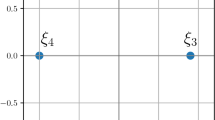Abstract.
Given a convex stochastic programming problem with a discrete initial probability distribution, the problem of optimal scenario reduction is stated as follows: Determine a scenario subset of prescribed cardinality and a probability measure based on this set that is the closest to the initial distribution in terms of a natural (or canonical) probability metric. Arguments from stability analysis indicate that Fortet-Mourier type probability metrics may serve as such canonical metrics. Efficient algorithms are developed that determine optimal reduced measures approximately. Numerical experience is reported for reductions of electrical load scenario trees for power management under uncertainty. For instance, it turns out that after 50% reduction of the scenario tree the optimal reduced tree still has about 90% relative accuracy.
Similar content being viewed by others
Author information
Authors and Affiliations
Additional information
Received: July 2000 / Accepted: May 2002 Published online: February 14, 2003
Key words. stochastic programming – quantitative stability – Fortet-Mourier metrics – scenario reduction – transportation problem – electrical load scenario tree
Mathematics Subject Classification (1991): 90C15, 90C31
Rights and permissions
About this article
Cite this article
Dupačová, J., Gröwe-Kuska, N. & Römisch, W. Scenario reduction in stochastic programming. Math. Program., Ser. A 95, 493–511 (2003). https://doi.org/10.1007/s10107-002-0331-0
Issue Date:
DOI: https://doi.org/10.1007/s10107-002-0331-0




